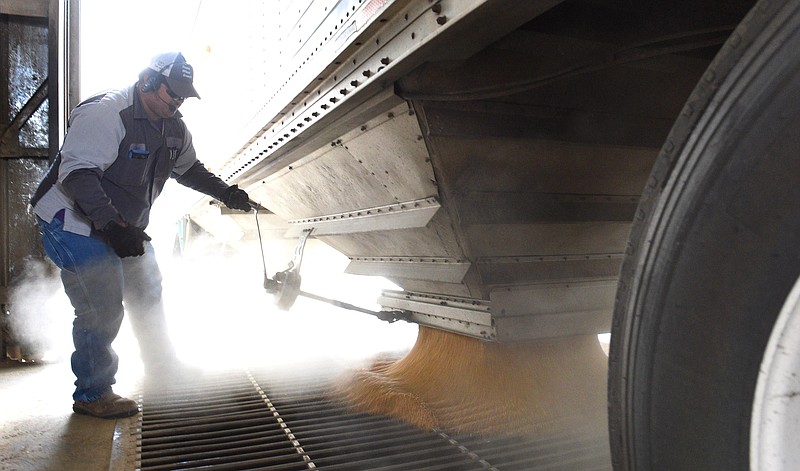AMARILLO, Texas-As truckload after truckload of harvested wheat makes its way from smaller grain elevators in Hereford and Canyon to larger operations in Amarillo for loading onto trains and shipment by rail, area farmers are looking back on a crop that was above average in quality and quantity.
"This year, the hard red winter wheat crop averaged about 60 pounds per bushel," Gavilon Grain senior grain merchandiser Tate Head said Tuesday.
The Amarillo Globe-News reports hard red winter wheat is the type planted most often in the Texas Panhandle, while soft white wheat is grown in other parts of the country.
"It's a weight that's well above what's classified as No. 1 grade grain," Head said. "Grain is graded in quality on a scale of one through five, and anything above 58 pounds per bushel is considered No. 1, the best you can get. Last year's wheat crop was a very low test year; the kernels didn't weigh very much. This year, the kernel weight was very good."
The rainfall in 2015 as well as earlier this year played a large part in the above-average August wheat harvest, Head said."Even though this summer was hot and dry, there was already enough water in the subsoil to grow the wheat crop to more than average."
While farmers brought wheat in from the fields to local elevators and finished harvesting about Aug. 1, the average price during that time was about $3.35 per bushel, Head said. The price Tuesday was down to $3.20 per bushel.
"The price went down because the crop that came off in Kansas was a record crop; the crop there was massive. It forced the national price to go lower, and the price per bushel in Kansas also came down because of it. A Kansas farmer was getting roughly 30 cents per bushel less than a farmer in West Texas."
In terms of the last five or 10 years, this year's wheat harvest was well above average, but it was not a record crop, Head said.
"In 2007, there was an enormous amount of acres planted, and there was rain after rain after rain," Head said. "At that time, we were loading out five trains a week during wheat harvest, and this year we're loading out one per week."
A train is made up of 110 cars, and each train car holds 4,000 bushels, or 440,000 bushels per train, Head said.
A tractor-trailer can haul about 900 bushels per trailer, so it would take about 489 trucks to transport the same amount of grain.
Hard red winter wheat is grown here largely because of the Texas Panhandle's milder winters, Matt Gruhlkey of Attebury Grain in Amarillo said.
"It can handle the stress of winter, plus it's a higher-quality wheat," Gruhlkey said.
"If you planted it up north it would kill it. In northeast Texas, they grow some soft red winter wheat, and while they're both red, and they're both winter and planted in the fall or winter, they're used for different baking products. But hard red winter wheat is a really good, milling-quality wheat."
Gruhlkey said one reason wheat prices are lower now is because the dollar is strong around the world.
"That pushes the futures price down because other countries can't afford to buy as much wheat because they don't have the buying power," he said.
Some Texas Panhandle farmers are already planting next year's wheat even as this year's harvest is just ending, Gruhlkey said.
"The very early guys are probably planting it for grazing. You can graze the wheat for a certain amount of time and still grow a crop. But the ones who grow it for grain are probably going to wait a bit longer."
And while big elevators like Gavilon and Attebury are full of wheat and busy loading trains right now, back out in the farmlands the workers have started to gear up for the coming fall harvest.
"They have to be empty by the time the corn, soy beans and milo come in," Head said. "It has already started down around Plainview. The harvest moves from south to north; it's hotter in the south, so the crops go into the ground sooner and come off sooner."
Head said Sept. 15 is when things will "really get going."
"Look at the crops in the ground now. Get out and look at the corn. The plant has made all of the grain that it's going to make. Farmers will turn off their wells now and let the plant dry up so that it's ready for harvest, and once that starts there will be about 45 days of heavy harvest going right through the end of October."


